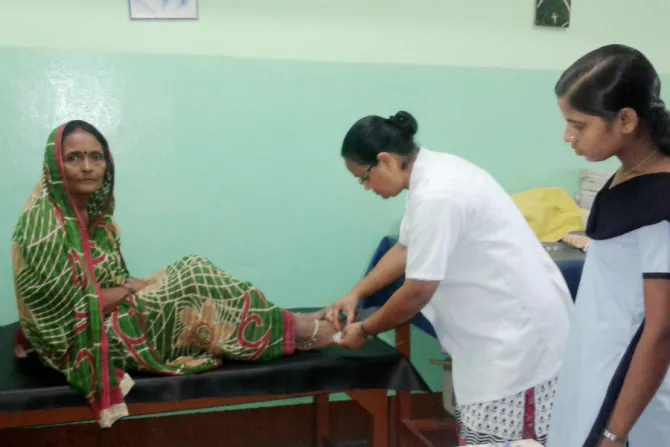Patna, India, Oct 16, 2019 / 16:01 pm
In most religious orders' novitiate year, prospective sisters study and pray. Sister Crescencia Sun, however, had another habit to acquire: killing venomous snakes.
In rural Bihar, about 4,500 people die of venomous snake bites each year. When the Sisters of Our Lady of Missions arrived in the Indian state in the 1990s to educate young girls, the sisters realized that God was calling them to another mission – a medical snakebite clinic.
"Initially, we didn't have in mind to open the snakebite clinic, but because the people, so many of them suffered from snakebites and … many people were dying, we trained our sisters to learn this because they are nurses already," Sister Crescencia Sun told CNA.
During the hot summer, the sisters treat 40-50 patients per day at their snakebite clinic, saving the lives of thousands of snakebite victims each year.
"In this place, many people are bitten by snakes … such as cobra, vipers, russell vipers, and krait to name a few," Sr. Sun shared at the "Women on the Frontlines" symposium in Rome Oct. 16.
The symposium – hosted by the U.S. Embassy to the Holy See – highlighted religious sisters' work in some of the most dangerous parts of the world.
"Women religious are among the most effective and vital partners we have on the frontlines in fragile communities around the world," Callista Gingrich, US ambassador to the Holy See, said at the symposium.
"Women religious are often the last beacons of hope for millions of people who otherwise would not have a voice. They serve the displaced and the desperate, frequently at the risk of personal harm, in places where governments have failed and humanitarian organizations struggle to operate," Gingrich said.
Sister Sun told CNA that, at first, she found the work at the snakebite clinic to be very emotionally draining.
"The first three months that I stayed there, I saw very many people dying of snake bites. I was very sad, and I said: 'Maybe this is not the mission for me,'" Sun shared.
"But, you know, when you see the people keep coming, then you get the courage, and I prayed to God everyday 'Lord, if this is what you want me to do, you are the one to give me the courage and the strength,'" she said.
Apart from treatment, the sisters work in preventative education, explaining to people in the surrounding villages the danger and how to protect themselves from the snakes.
"Hindus worship snakes, so they do not kill them, even when they become victims of snakebites. So during summer, we work 24/7 day and night," she said.
Because of poverty, many of the patients they see live in huts made of bamboo and grass with a type of mud floor that can attract venomous creatures, particularly in the summer and rainy seasons.
"We have many stories of people telling us that when they get up in the morning, they just put their foot down from their bed and that is where they were bitten by a snake," Sun said.
To keep themselves safe, the sisters have also trained dogs to detect the presence of snakes.
(Story continues below)
"I was very much afraid of snakes. But, being in Bangalore for my novitiate, training to become a religious, in that area we also have plenty of snakes and cobras. That is where I learned how to deal and even have killed a number of snakes, so when I came here, that was a kind of preparation for me," she said.
In 2018, the Congregation of the Sisters of the Our Lady of the Missions treated more than 6,000 snakebite patients at their snakebite clinic in Kanti, Bihar.
"I believe that God uses us religious as instruments and miracles take place because God heals," Sister Sun said.



